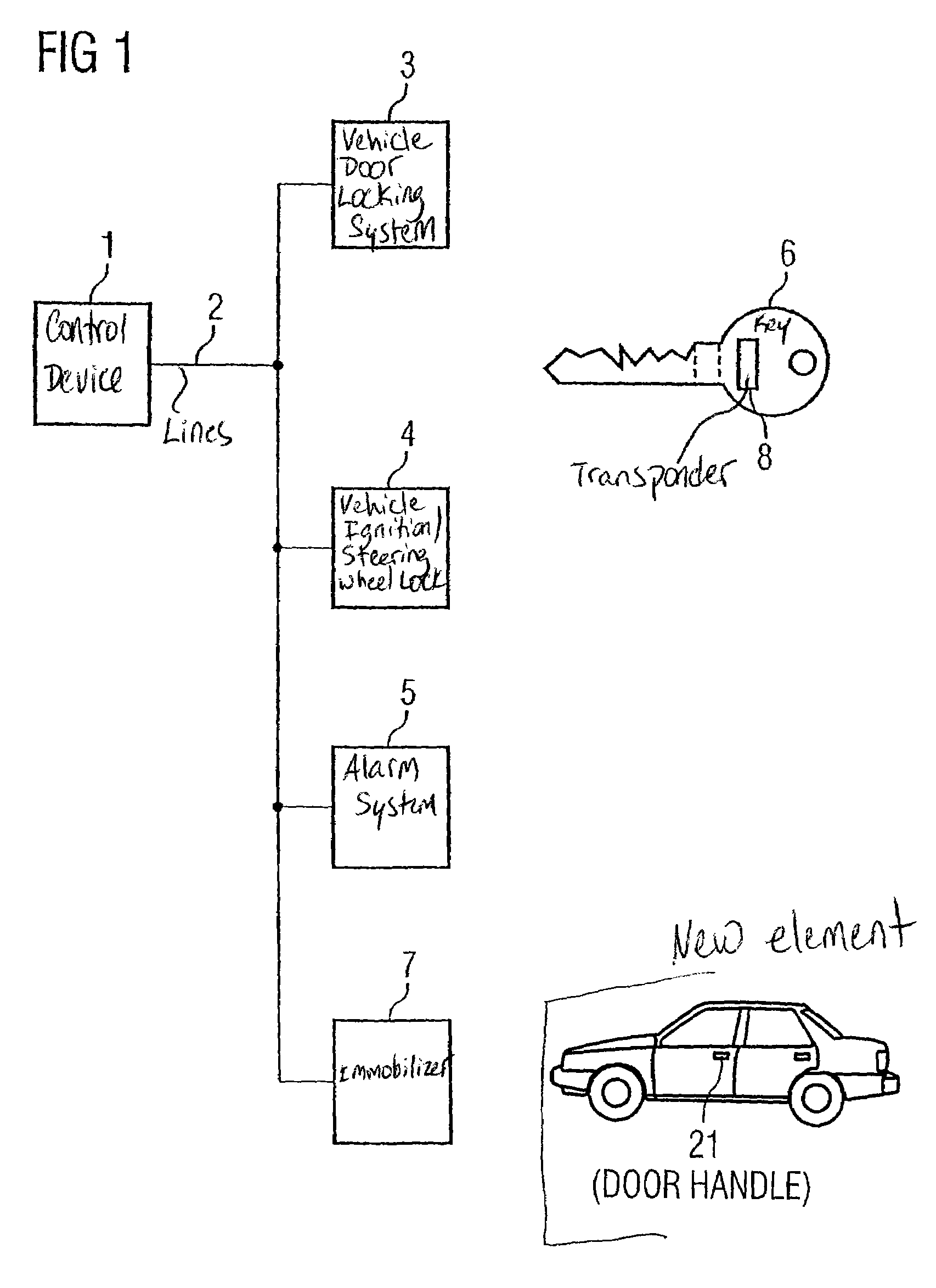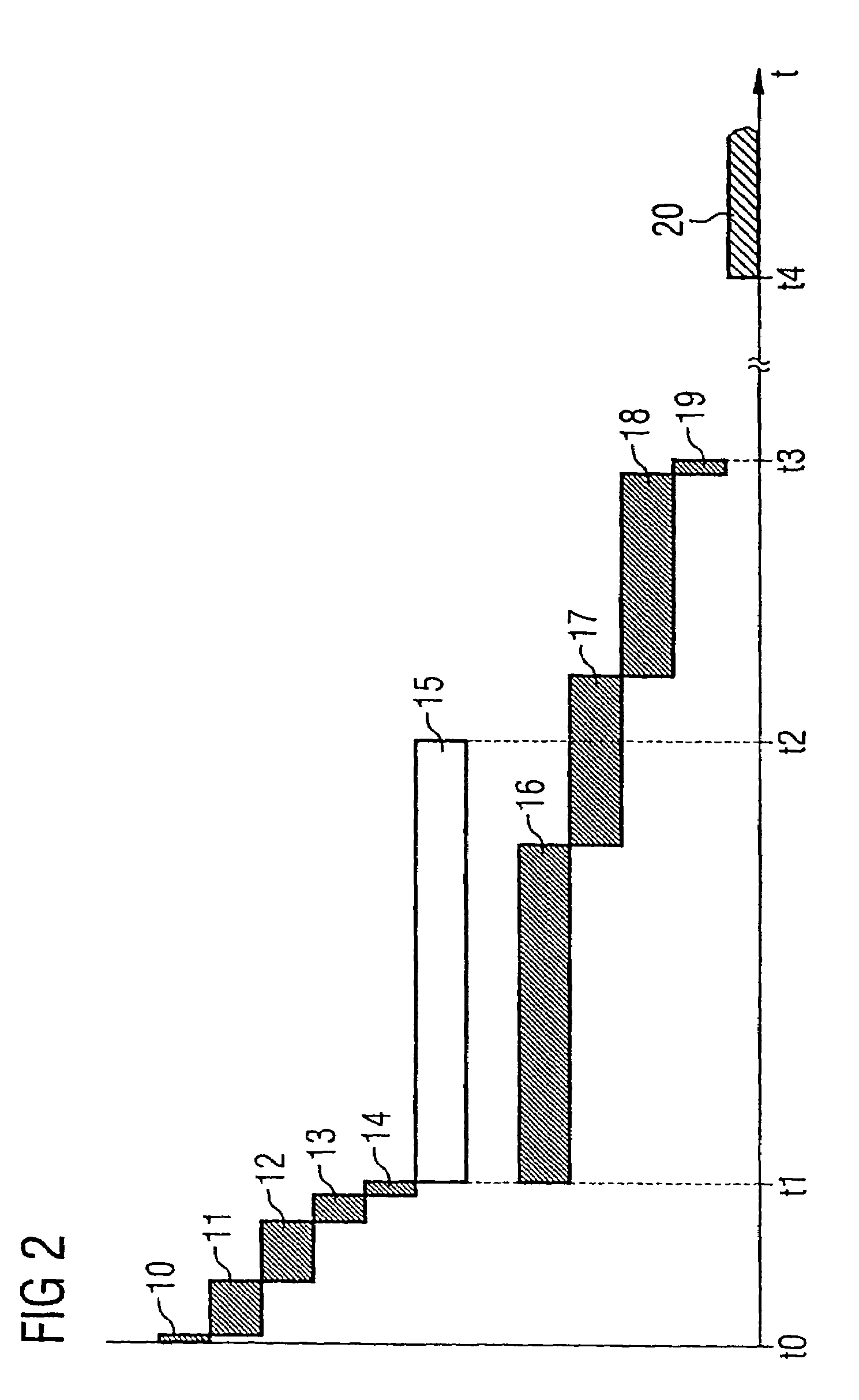Electronic anti-theft system
an electronic anti-theft and electronic technology, applied in anti-theft devices, program control, instruments, etc., can solve the problems of inconvenient operation, and inability to unlock doors, etc., to achieve the effect of quick unlocked, easy operation, and rapid unlocking
- Summary
- Abstract
- Description
- Claims
- Application Information
AI Technical Summary
Benefits of technology
Problems solved by technology
Method used
Image
Examples
Embodiment Construction
[0039]FIG. 1 shows in a general form a block diagram for an electronic anti-theft system in a motor vehicle, which comprises a control device in the motor vehicle (not shown). The control device 1 uses lines 2, which can be operated bidirectionally, for a connection to communicate with the vehicle door locking system 3, especially a central locking system, the vehicle ignition lock and / or steering wheel lock 4, an alarm system 5, and / or an immobilizer 7. The door locking system 3 and / or the ignition locking system 4 can be activated by an electronic key 6 carried by an operator of the motor vehicle, which can for example be inserted mechanically into one of the locks 3, 4, for activation. In addition, electronic activation of the lock, for example by remote control, is conceivable for opening the doors. The key 6 can be configured in a conventional way, i.e. using the known key-lock principle, or also as a cheque card or chip card.
[0040]In addition or alternatively, the access autho...
PUM
 Login to View More
Login to View More Abstract
Description
Claims
Application Information
 Login to View More
Login to View More - R&D
- Intellectual Property
- Life Sciences
- Materials
- Tech Scout
- Unparalleled Data Quality
- Higher Quality Content
- 60% Fewer Hallucinations
Browse by: Latest US Patents, China's latest patents, Technical Efficacy Thesaurus, Application Domain, Technology Topic, Popular Technical Reports.
© 2025 PatSnap. All rights reserved.Legal|Privacy policy|Modern Slavery Act Transparency Statement|Sitemap|About US| Contact US: help@patsnap.com



